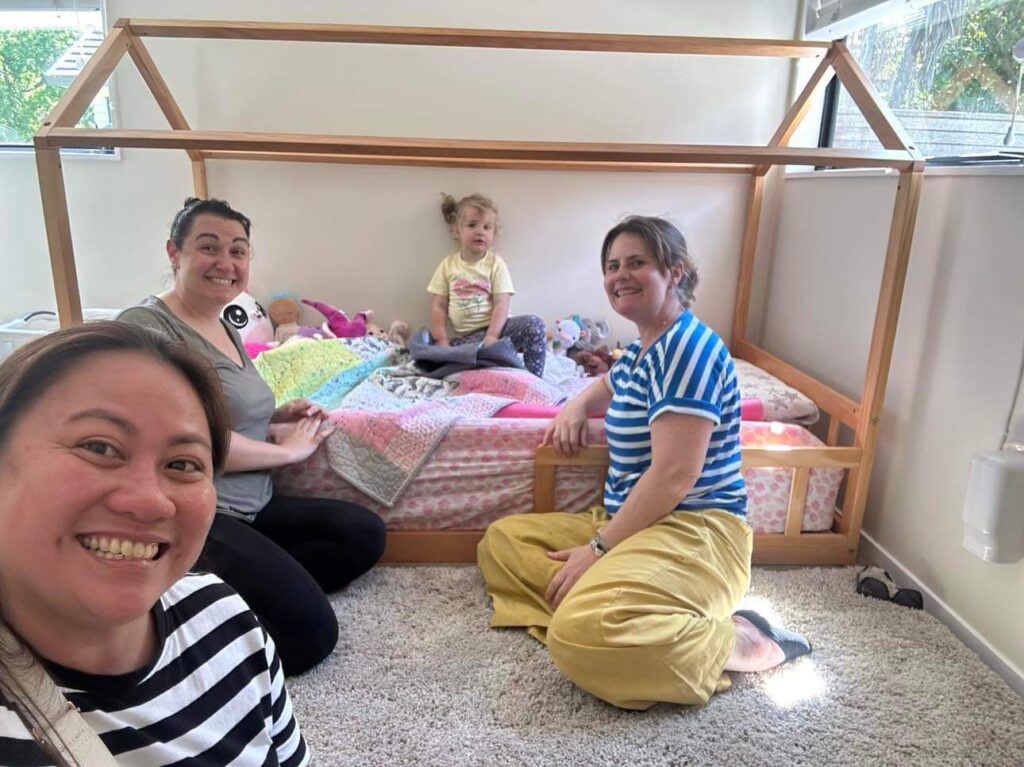
How do I get my child to settle when I drop them off at Kakapo Creek?
Let’s face it: unless your child is a strong extrovert (extroverts get their energy from being with people), the first couple of days saying goodbye to your precious child can range from highly stressful to heart-wrenching – both for the child and dad and mum! And this is normal and to be expected. It’s hard-wired into adults that children are vulnerable and need taking care of. So the first time you bring your child to Kakapo Creek and you pass your child to someone you hardly know anything about, that’s alarming. It’s an adaptive response that enables humans to survive – we care for our young.
You know they will be loved and hugged and fussed over when you leave . . . But your two or three or four-year-old doesn’t know that, nor understands it.
How can you bring a sense of calm and security to your child when you are physically absent?
The critical insight to soothe an aroused child
Here is where the battle is won or lost! When you leave your child, you must keep connecting to them even when you’re physically absent. That means you must create a bridge of connection that they know exists even though you are physically apart. That’s why I never recommend that a parent distracts their child and quickly sneaks out of the room. Yes, it may avoid tears, but when your child realises you aren’t there and you have vanished, it dramatically increases their sense of alarm – and as long as your child feels fear, your child will struggle to self-soothe.
Insight: children who can’t self-soothe when their parent leaves feel the connection between them and their parent is lost, creating alarm expressed in tears, whining, and distracting behaviours. To put it another way: if your child is still showing aroused behaviours after a few days, it’s a sign they don’t believe they are connected to their absent parent. Build the bridge of connection, and very quickly, the tears go.
Ideas for maintaining a connection even when separate
There is no one perfect way to bridge an emotional bridge of connection for your child, so they feel connected to you when you are physically not there. So experiment and see what works best. And remember, every child is different, so they may need a different approach that fits their personality better. There are lots of ways to build a bridge of connection. Here are a few:

A. Put kisses and hugs on a toy your child brings to Kakapo Creek.
Example: mummy is putting kisses on the teddy, and mummy’s kisses will be on him until I come to pick you up. Mummy’s kisses will be with you all the time you are here, and then mummy will be here to kiss you when I finish work.
B. Don’t be alarmed by tears and think they are wrong.
Tears are very healthy for a child when they experience loss. You don’t want them to stuff their hurt feelings, as that’s not good. Welcome their tears and share: “Mummy is sad too that I have to go to work.” This shows your child how they feel is okay, and you validate to your child that their hurt feelings are understood by you, and it’s okay to be sad. When parents express empathy for how their child is feeling, it helps the child feel safe and loved.
It’s common to think if we acknowledge a negative feeling, it might get out of control and then what can I do! But healing hurt doesn’t work like that. All emotions have to be acknowledged to be emotionally healthy. Don’t be timid about going with your child into their sadness at losing physical separation from you. Once they feel understood, they will grow beyond the sad feelings. And that’s how it’s done without wounding a child for a long time.
C. Give your child a photo of yourself (dad/mum) and share:
“mum/dad will be with you all day, watching over you.” That’s why lovers have photos of each other, so they can still hold each other in their hearts when they are absent. Children need that too.
D. Create ritual times when you are close to them.
Example: “when you sit down for lunch/mat time/ story time/ playing outside, know mummy will send you hugs and kisses.” And science says the unconscious mind goes to work to recall for the child that mum is thinking of them when engaged in that activity. It’s been primed.
E. Talk about what you are going to do when you come back
don’t put the focus on leaving but on returning. Example: I will give you a hug and kiss when I return.
F. Create goodbye and hello rituals.
For example, use a high five, touch their face when you kiss them or have a song you sing when you come to Kakapo Creek driveway before you exit the car. Make the focus on the fact that you are going to see each other again soon.
G. If your child is a baby, this works excellent:
take some article of clothing like a blanket and mum, put some of your perfume on it and let your child take it to Kakapo Creek (a small blanket, obviously!). The smell is powerful for babies, so use it to build a bridge of connection.
H. One of the critical factors in maturity is that a person can mix their feelings.
Sadly not all adults have it, and that’s why there’s so much violence in society. The ability to mix feelings begins for the child with their parents/teacher helping them integrate their feelings.
Example: Dad: “You’ll be sad daddy has to go to work; Daddy understands that because if I was a little boy, I’d be sad too if my dad had to go to work. Sadly, we can’t be together all day. But dad has to go to work because he has a job that helps the family. On the one hand, you are sad dad has to go to work . . and that is sad . . . but dad is coming back; I’ll be back as soon as I can to pick you up, and won’t it be great to be together.”
Teaching your child how to mix their emotions is an important skill so we will have a parent learning on it next year at the centre. A highly aroused, aggressive child can become calm and compliant within a minute if you can help them mix their feelings.
One final thing to help a child keep dad and mum in their heart when you aren’t physically there.
The English language is rather unemotive! The British aren’t renowned as people of passion (apart from soccer matches when they find a new personality). The English word for when we leave someone is “goodbye.” Even pronouncing it is cold and formal; you can’t say it with passion! The focus is on leaving: goodbye; I’m out of here, so long buddy – you are on your own!
Saying ‘goodbye’ to your child when you leave them at Kakapo Creek for the first couple of weeks isn’t reassuring for a child. But take the romantic, passionate French (or Italian, Spanish). When they leave, they say au revoir. Which translated means, until we meet again. For the French, the focus is on the welcoming return, not the leaving. I like that, and your child will as well. Our choice of words can make a significant difference. When you drop your child off, avoid saying goodbye and keep the focus on au revoir: “I’m coming back, and I can’t wait to see you again.”

